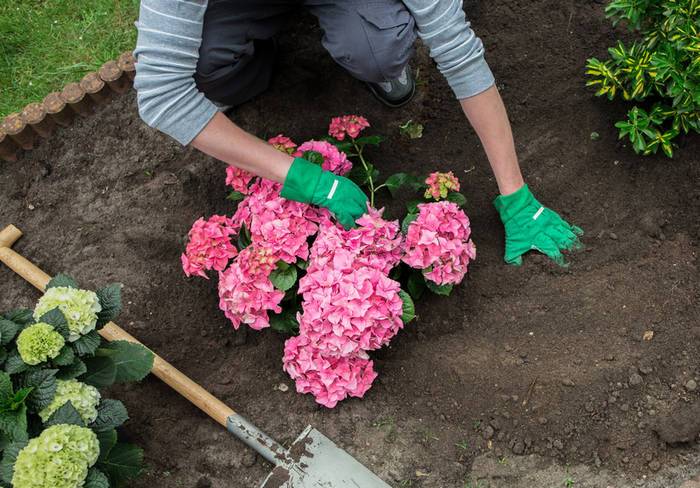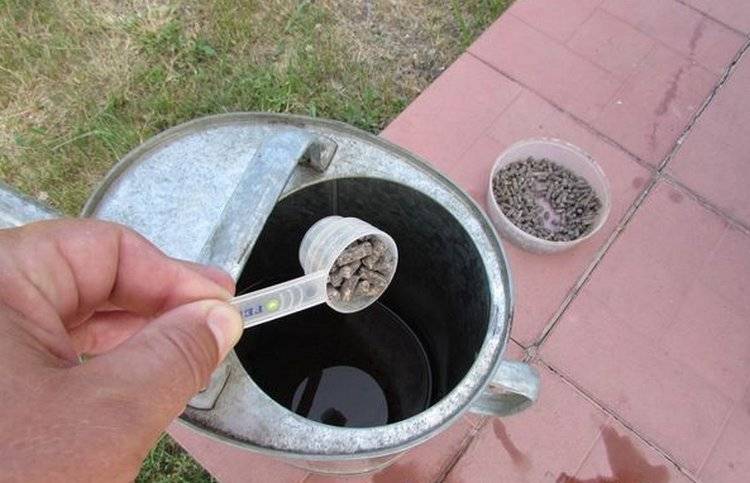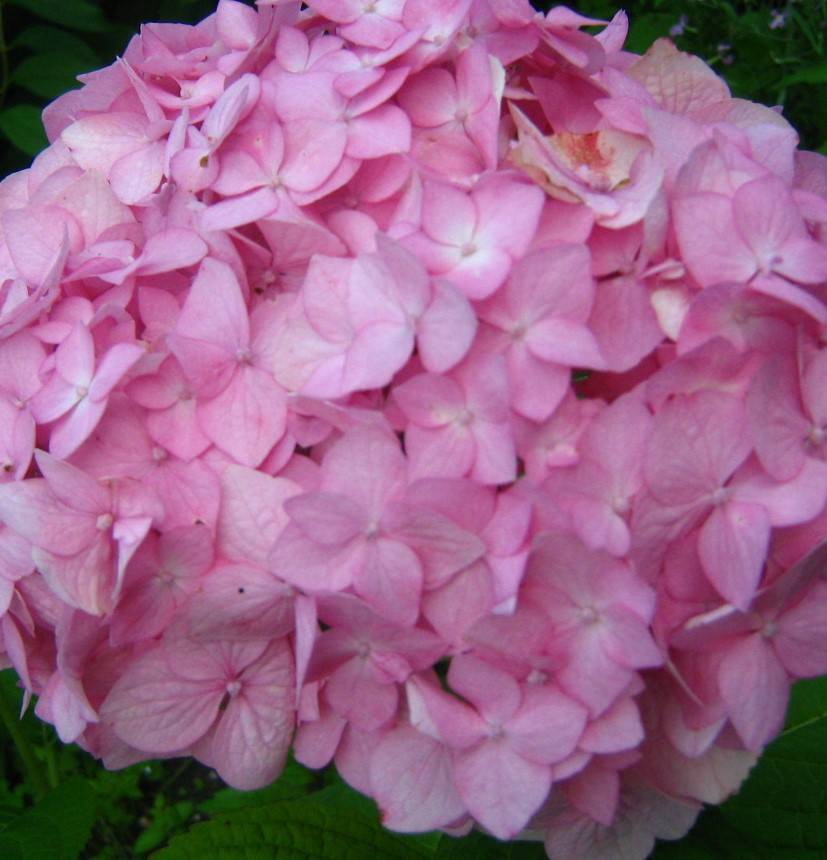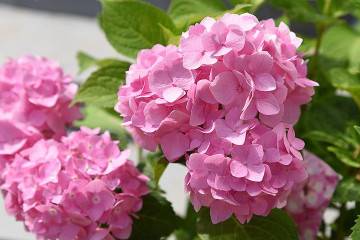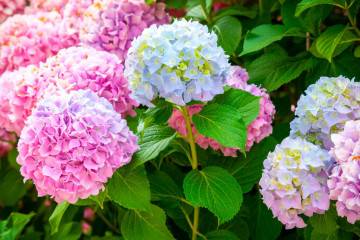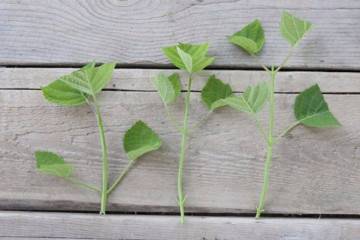Hydrangea Bouquet Rose large-leaved
Content:
Looking at the Rose Bouquet variety at the peak of flowering, it becomes clear why it was named that way. The foliage is almost invisible, the whole bush seems to consist only of pink and purple inflorescences. This variety is sometimes referred to as rose hydrangea.
The origin and appearance of hydrangea Rose Bouquet
The homeland of large-leaved hydrangeas is considered to be the east and southeast of Asia, North America.
Hydrangea Bouquet Rose is a deciduous shrub with a spherical crown up to 1.3 m in height. The growth is 20 cm per year. The bush has opposite foliage, leaves are large, ovoid, rough, their color does not change in autumn.
Description of flowering large-leaved hydrangea Rose Bouquet
Flowers of pink, pink-lilac, blue color are collected in umbellate inflorescences. The diameter of the umbrellas can be up to 25 cm. The color of the petals depends on the acidity of the soil. The lower the pH (acidic soil), the more pronounced the blue and blue tones. On neutral soils, the variety will bloom exclusively with pink flowers.
Transplantation of hydrangea Rose Bouquet after purchase in open ground
It is better to plant a bush in early spring, before the plant picks up color, or in the fall after flowering.
What is needed for landing
For planting, you need a healthy seedling and the right place. A young plant must meet the following requirements:
- age 3-4 years;
- closed root system;
- without damage;
- without dried, rotten leaves;
- without signs of damage by diseases and pests.
Choosing the best place
This variety thrives in the sun and partial shade. The soil is preferable fertile, well moistened and drained with an acidic reaction (pH 4.5-5).
A bush growing in the wrong place will not bloom and develop well.
In the selected area, it is necessary to prepare a landing hole with a depth and diameter of at least 50 cm.
The day before planting, the pit is filled with water. After the water is absorbed, a 20 cm thick layer of nutrient soil is poured onto the bottom, mixed with 20 g of superphosphate and 20 g of potassium sulfate, forming a mound.
Step-by-step planting process
To properly transplant a hydrangea, you need to take the following steps:
- Transfer the seedling to the prepared hole.
- Spread out the roots carefully.
- Cover the root system with soil.
- Water abundantly.
- Mulch with peat, bark, sawdust.
Reproduction of large-leaved hydrangea Rose Bouquet
Hydrangea in the garden can be propagated generatively (by seeds) and vegetatively (by layering, dividing the bush, cuttings). Which way to use, each grower chooses for himself. The easiest option is to propagate by cuttings.
Propagation by cuttings
A green stalk is part of a shoot with leaves and buds. This method is the easiest and most affordable.
Planting material is prepared in mid-July. Cuttings cut early in the morning from the lower branches of young plants, without signs of diseases and pests, will take root well.
Rooting is carried out as follows:
- After cutting, the shoots must be placed in water.
- Remove the top with a bud (if any) from the shoot.
- Divide the remaining shoot into segments with 2-3 pairs of leaves.
- Cut off the lower leaves from each cutting, and shorten the upper ones by a third.
- Place the cuttings in a rooting stimulant solution for 2 hours.
- Rooting is carried out in a moistened mixture of sand and peat (1: 2).
- Cover the rooted cuttings with a jar.
- Watering the cuttings is necessary 2-3 times a week.
- To withdraw the banks in a month.
If the cuttings are rooted on the site, then in the cold months they need to be insulated with a covering material on the arcs, and on top with spruce branches. The grown bushes are planted in a permanent place.
Growing from seeds
Seed propagation of hydrangeas is a laborious and painstaking process, it does not always provide an accurate transfer of varietal characteristics.
Growing from seeds is performed according to the following algorithm:
- In the fall, seeds are sown in a container on the surface of the soil, they do not sprinkle with earth on top. Seedlings will appear in 4-5 weeks.
- Seedlings dive 2 times, selecting only the strongest ones.
- After picking, top dressing is carried out with specialized fertilizer for seedlings.
- Young hydrangeas are planted in open ground 1.5-2 years after sowing.
Large-leaved Hydrangea Care Rose Bouquet
Caring for large-leaved hydrangeas is simple. Simple agronomic techniques, performed accurately and on time, will provide excellent results.
Watering mode
Hydrangea Rose Bouquet loves moisture, drought is dangerous for her. You need to water with water at room temperature directly under the root.
During the summer heat, water every 2-3 days. With a normal amount of rain, the bushes will need to be watered 5 times per season.
Top dressing
To make the hydrangea bloom long and beautiful, it is fed at least 2 times a year. The first top dressing is in the spring before the buds appear, the second - in the fall after flowering. In the spring, fertilize with a urea solution (10 teaspoons per bucket of water). Each bush will need 3 buckets of mortar. In the fall, a complex fertilizer is applied.
There are many complex fertilizers for hydrangeas on the market. Using them will provide the bushes with the necessary nutrition.
Features of care during flowering
During flowering, the plant needs regular, abundant watering. At the very beginning of the opening of the buds, you can feed the bushes with a solution of mullein or chicken droppings (1:10).
Features of care during the rest period
During the rest period, the following agrotechnical measures are carried out:
- mulching. Covering the near-trunk circle, moisture will be retained in the soil longer, preserving its structure. You can mulch with expanded clay, shavings, sawdust, vermiculite, bark. You can plant shade-loving ground cover crops around the stem: periwinkle, highlander, thyme;
- pruning. In the spring, sanitary or formative pruning is carried out. During the first, diseased, dry, damaged branches are removed, young shoots are shortened by 1-3 pairs of buds. Forming allows you to give the bush the desired shape. If there is a need to rejuvenate the plant, all stems are removed from it, leaving 5-6 cm each.
In the fall, the faded inflorescences are cut off.
Preparing for winter
Large-leaved hydrangea Rose Bouquet has low frost resistance. Does not tolerate temperatures below -18 ° C. To preserve the bushes, they must be insulated before the cold winter.
To properly insulate a hydrangea for the winter, you must:
- It is good to huddle the bush before the onset of cold weather.
- Bend the branches to the ground and pin them.
- Cover the shoots with several layers of spunbond, on top with a film.
- Put spruce branches or dry leaves on the film.
Hydrangea planted on neutral soil The rose bouquet will bloom with pink flowers. Other varieties of hydrangeas with a similar color can be found on sale:
- Hydrangea Coquin Rose, planting and caring for it are the same as for Rose Bouquet. The variety is new, it has pale pink inflorescences and serrated flowers. It develops well, blooms profusely, is resistant to diseases. Low winter hardiness. Changes color depending on soil pH. Blooms from late June to October;
- hydrangea Early R. This variety is not cultivated in the open field in Russia, it absolutely does not tolerate frost. At home in a pot, such a hydrangea will bloom in bright pink inflorescences from late May to late October.
Rose bouquet is often used in landscape design in single and group plantings. The variety is easy to care for, it does not require any special measures. The main thing is to plant the seedling correctly and apply fertilizers on time for abundant flowering.

